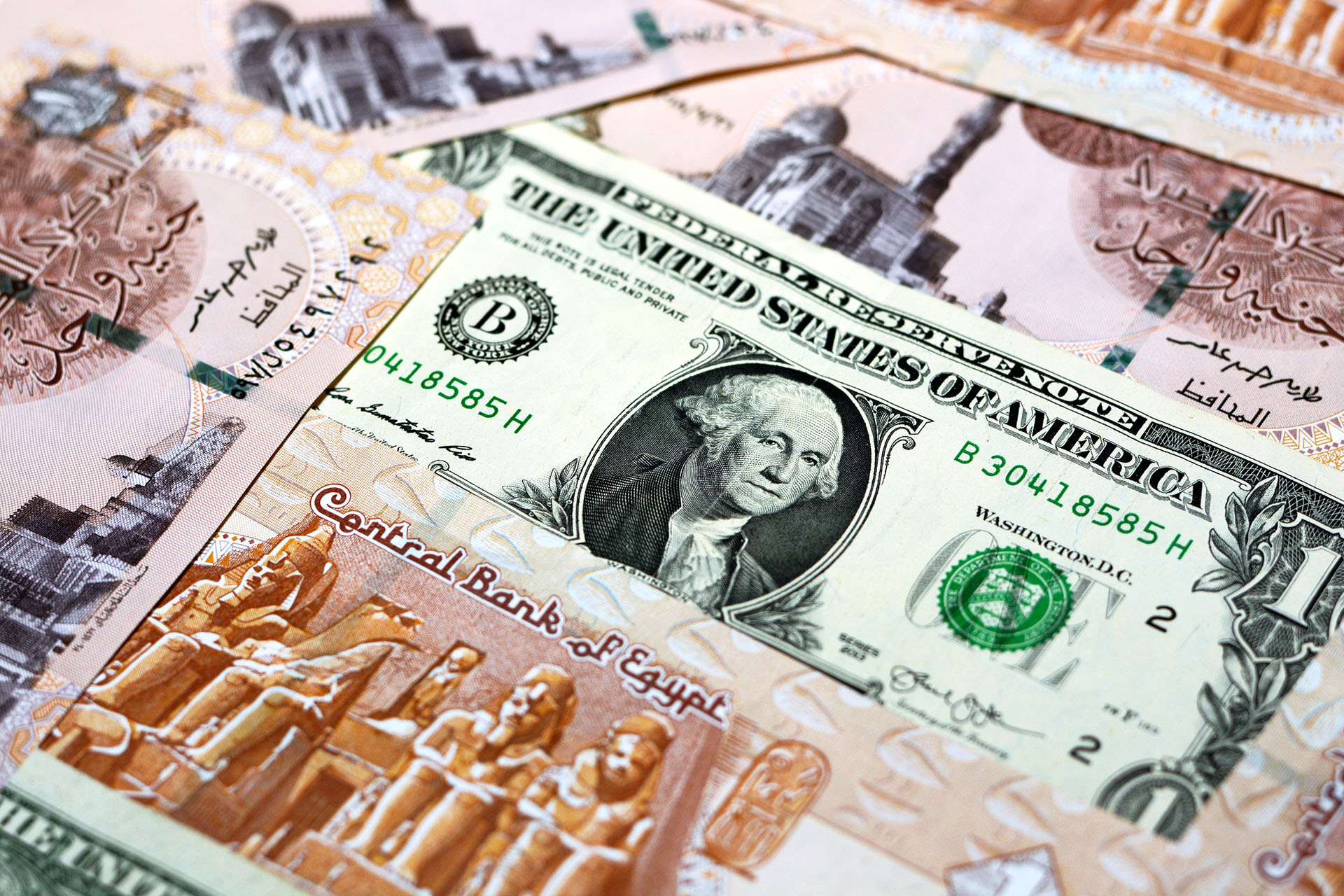The Egyptian currency continues to decline, approaching the barrier of 70 pounds to the dollar (Shutterstock)
At a time when the Egyptian pound continues to decline against the US currency, reaching its lowest level at 69 pounds to the dollar in Monday’s trading, Cairo senses increasing risks resulting from the dollar scarcity crisis in the local market, at a time when it is considering expanding the loan scheduled for it from the International Monetary Fund in December. December 2022, with a value of $3 billion.
According to the Egyptian “Exchange Today” online platform (private), the exchange rate of the US dollar in the parallel “black” market in today’s transactions reached 69 pounds, which is the lowest historical level for the Egyptian currency, while the price in the official market is 31 pounds, according to data from the Central Bank of Egypt.
Until the eve of the Russian-Ukrainian war, in February 2022, the dollar was sold on the official market for 15.7 pounds, but the Egyptian Central Bank moved the exchange rate 3 times, as part of the IMF’s requirements for an economic reform program.
As of the last quarter of 2023, the dollar scarcity crisis in the Egyptian market entered a new phase, due to the increasing need of importers for foreign exchange to meet the value of imports, and the fluctuation of the amounts of dollars entering the country.
The region's crisis
Today, the Israeli war on the Gaza Strip, and the resulting crisis in the southern Red Sea, has entered the crisis line of fluctuation in the availability of foreign exchange, through the decline in the movement of ships crossing the Suez Canal, which is a major supplier of foreign currency.
The Red Sea crisis comes as a result of the Yemeni Houthi group’s threat to target Israeli ships in the Red Sea or those carrying goods for Israel in solidarity with the Gaza Strip, which has been exposed since last October 7 to a devastating Israeli aggression with American support that led to the death of about 25,000 Palestinians, in addition to the wounding of about 63,000. Others.
Last week, IMF officials visited Egypt, with the aim of expanding the current loan and releasing a new tranche of the loan that Cairo obtained in December 2022.
Rising prices
As a result of the decline in the local currency, the prices of major commodities jumped in the Egyptian market, starting with gold, which is sold at a higher price than its global value, and not ending with the prices of sugar, rice, wheat, and flour, while meat prices jumped to 400 pounds ($13) per kilogram, from 250 pounds several months ago. .
Next Thursday, the Central Bank of Egypt will hold a meeting of the Monetary Policy Committee, amid expectations of raising interest rates by 200 basis points, with the aim of curbing rampant inflation in the country.
Last month, the Central Bank of Egypt kept the overnight deposit and lending rates at 19.25% and 20.25%, respectively.
The country's annual inflation growth slowed to 35.2% last December, down from 36.4% the previous month, but prices this January witnessed successive jumps due to the pound's fall on the black market to an average of 65 against the dollar, from 49 pounds. Last month.
In a report on Saturday, the Capital Economics Research Foundation said that the economic crisis is getting worse in Egypt over time, as the ongoing disruptions to navigation in the Suez Canal exacerbate the foreign exchange shortage and increase Cairo’s need for an agreement with the Fund.
On Friday, the United Nations Conference on Trade and Development (UNCTAD) said that commercial shipping traffic between Europe and Asia, transiting through the Egyptian Suez Canal, declined during the last two months by 42%.
While data issued by the International Monetary Fund and the University of Oxford reported that there was a decrease in the average number of ships to 49 ships per day as of last Sunday, compared to the daily peak in 2023 of 83 crossings.
Based on Egypt's fiscal year, the Suez Canal recorded the highest revenues in its history during the last fiscal year, which began in June 2022 until the end of July 2023, amounting to $9.4 billion.
The dollar crisis coincides with the rise in prices of a number of major services, which has imposed additional pressure on consumers, amid the government’s attempts to increase its financial revenues.
Electricity prices for home consumption increased by rates ranging between 16% and 26%, based on consumption segments, and electricity prices in the commercial sector recorded an increase of approximately 20%.
Source: Al Jazeera + Anatolia

